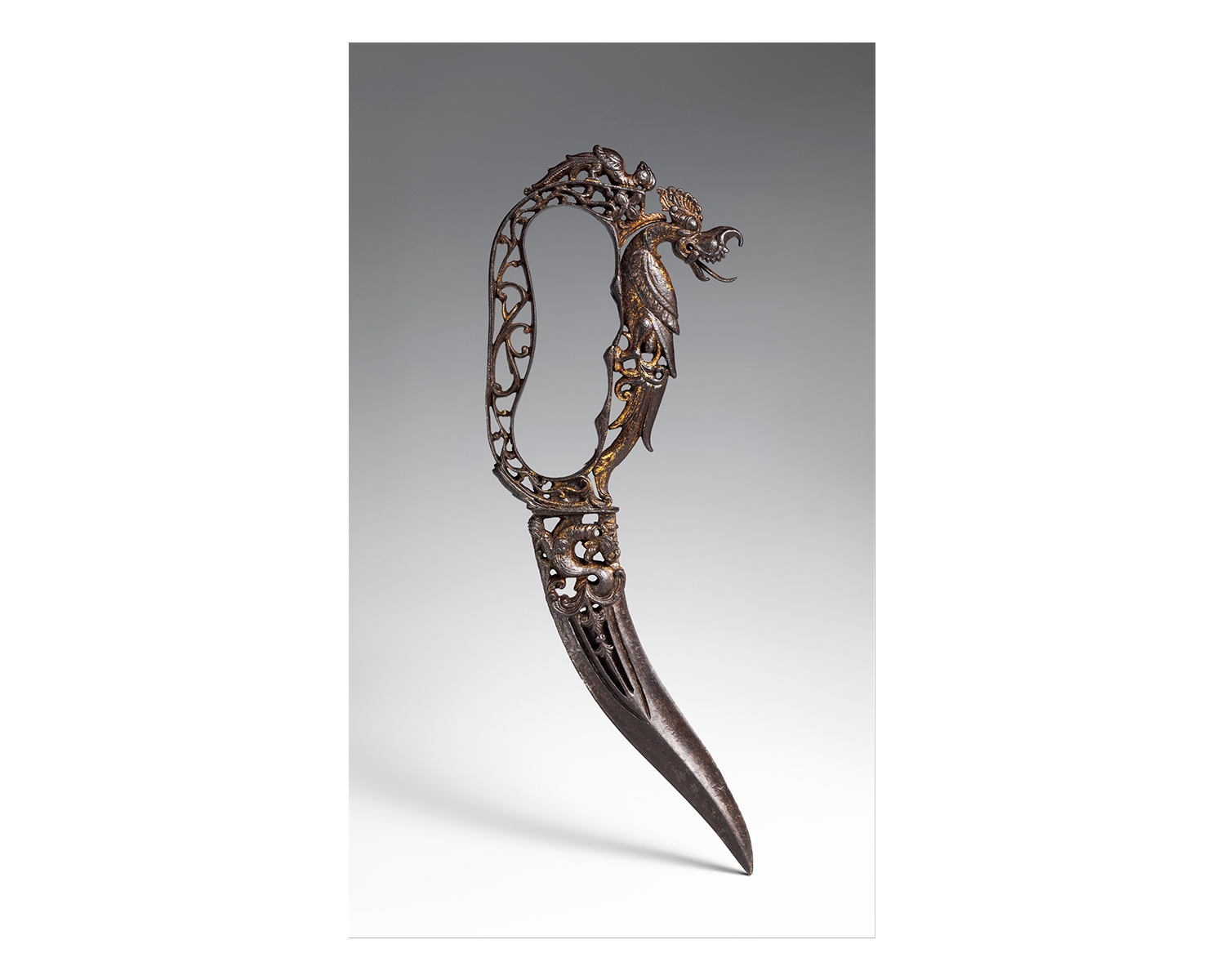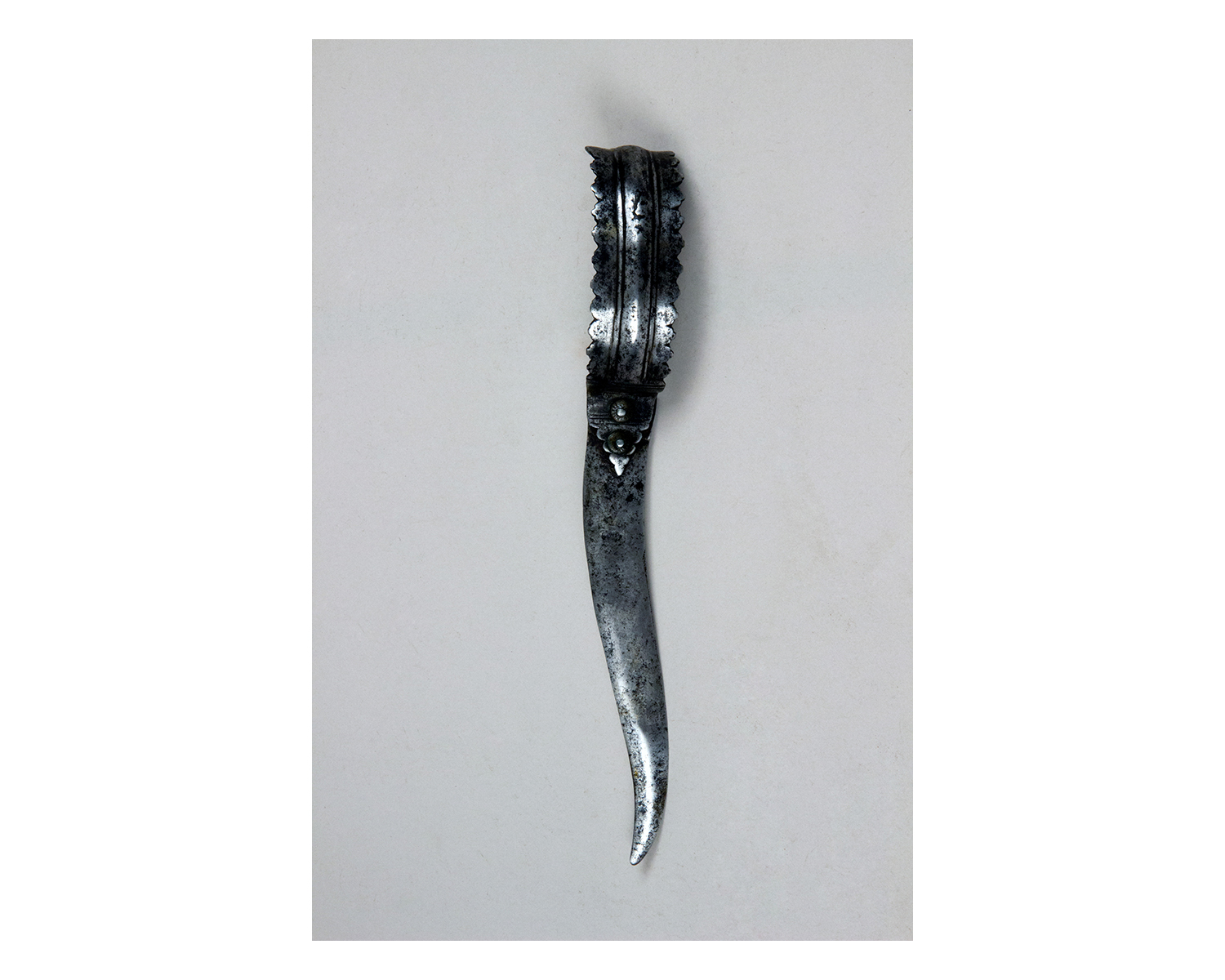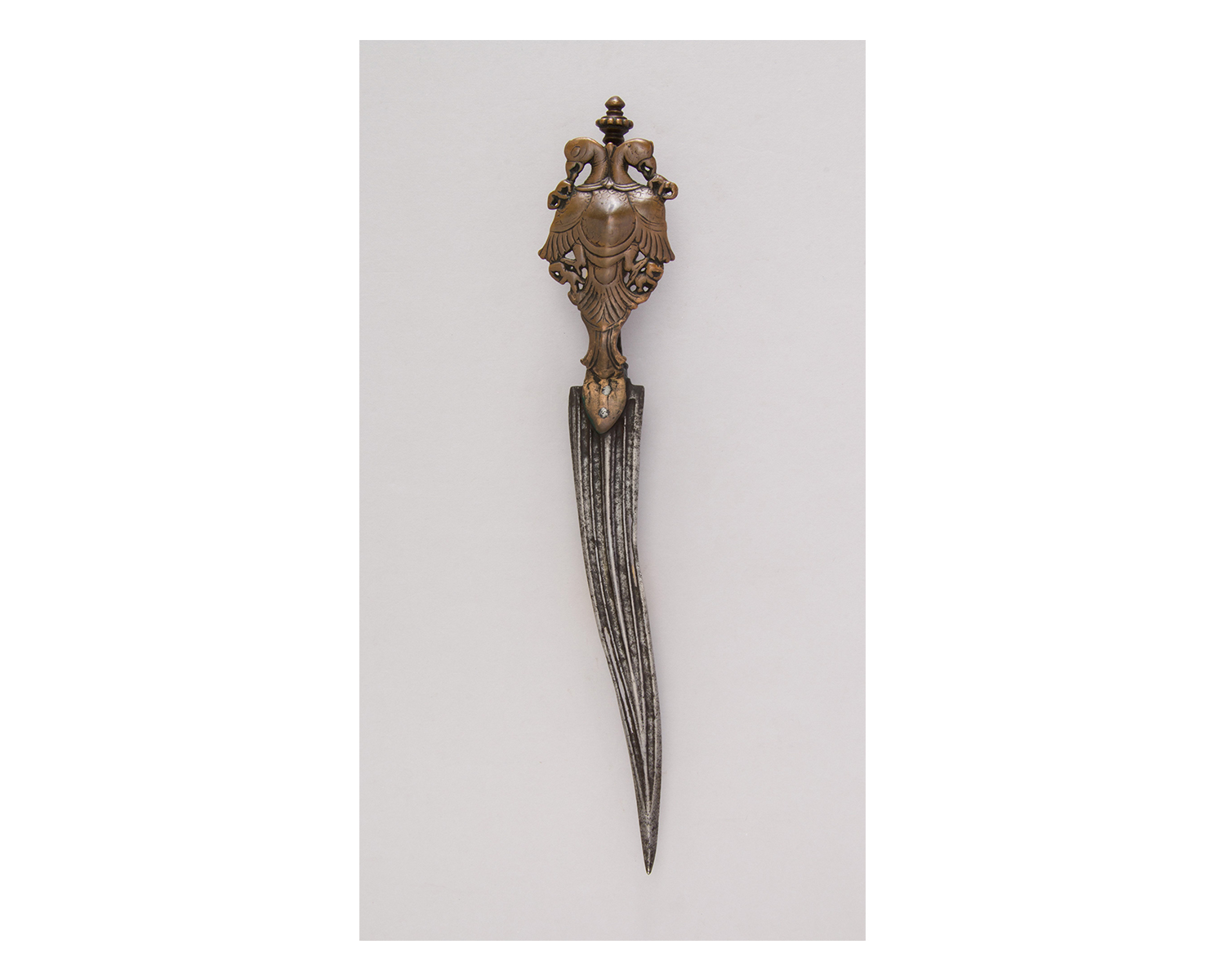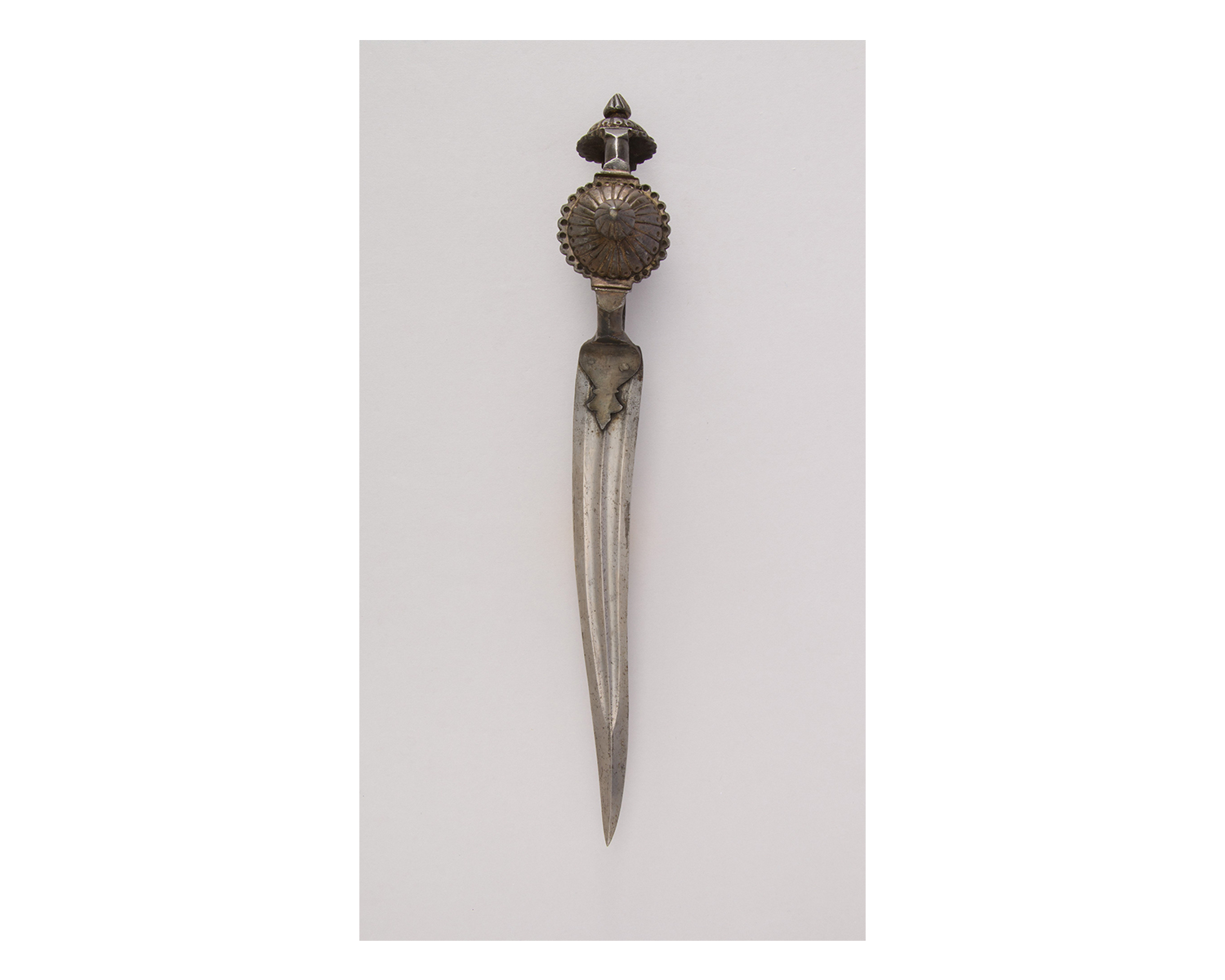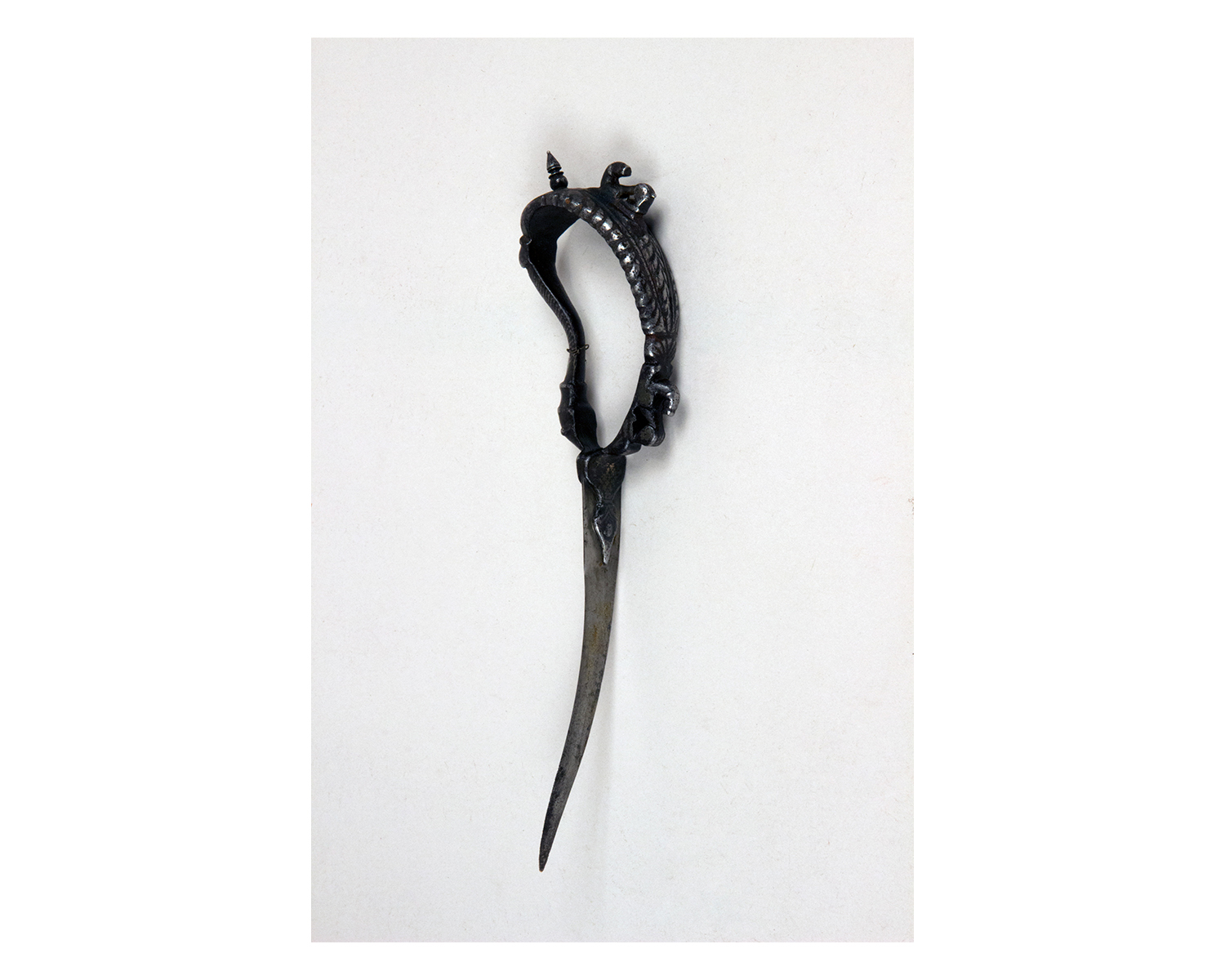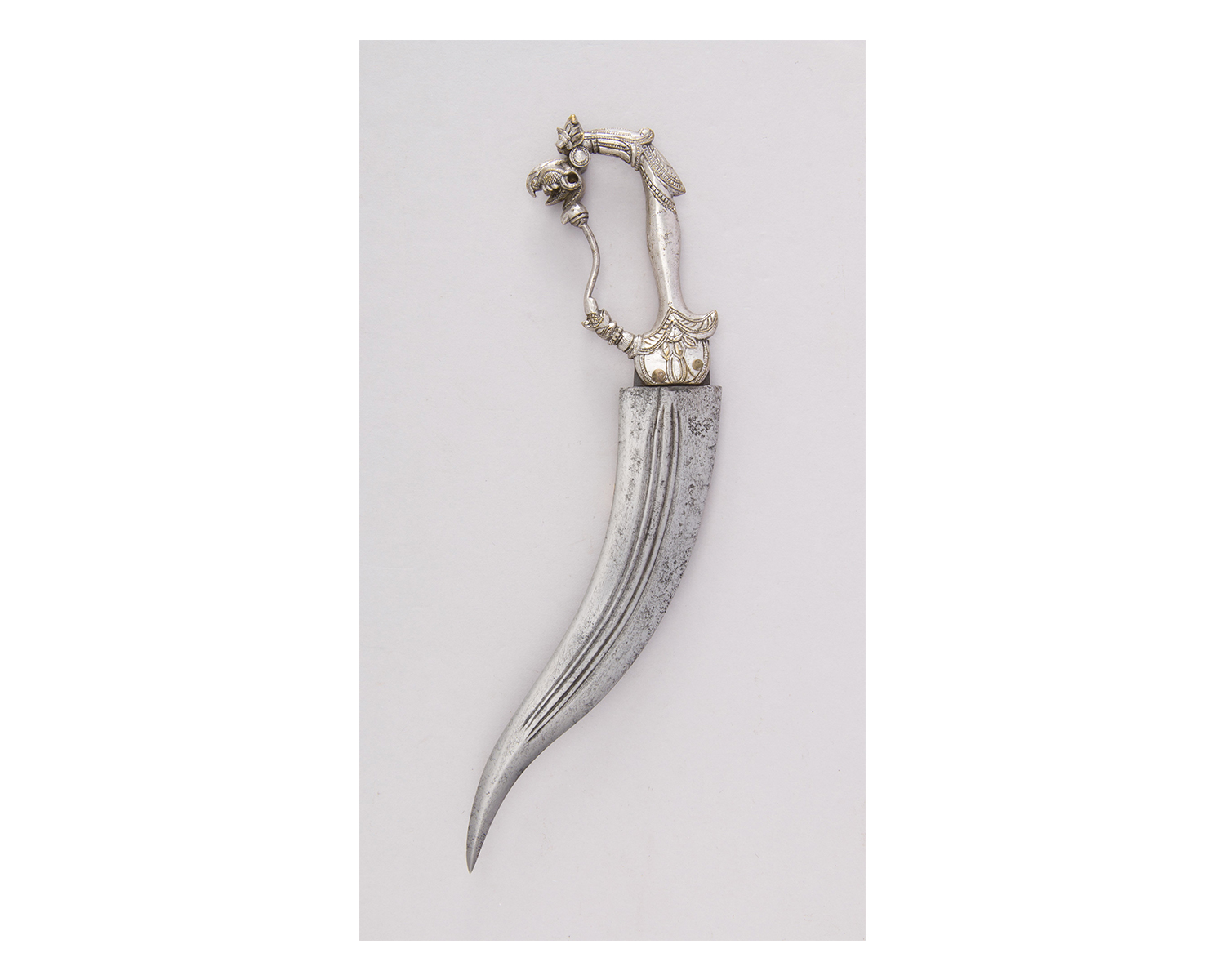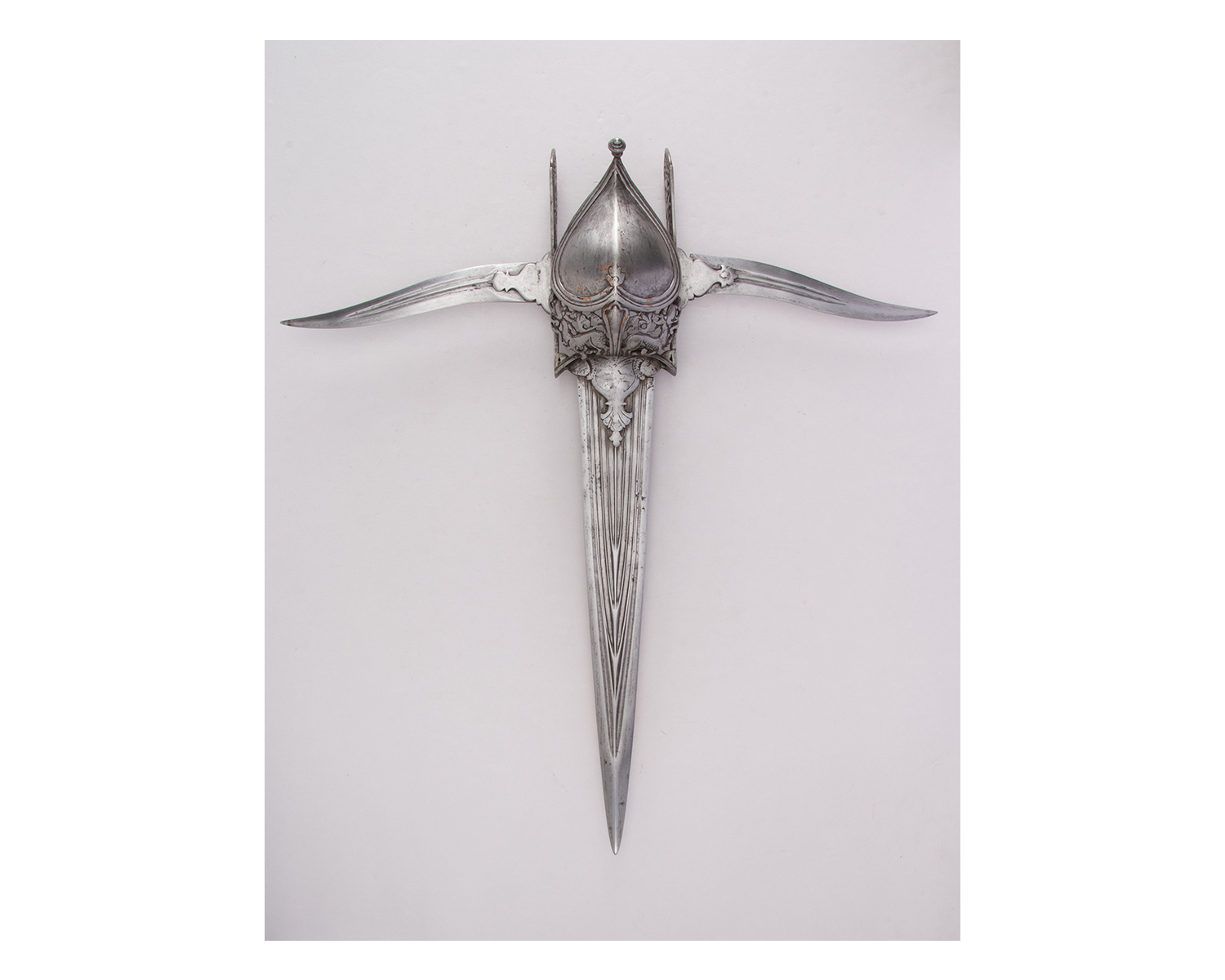ARTICLE
Bichuwa
A double-edged dagger with a distinctive twice-curving blade, the bichuwa is thought to originate in the Deccan region of the Indian subcontinent. It derives its name from the Hindi word for scorpion, whose sting the weapon resembles. The bichuwa often features a looped hilt that wraps tightly around the palm, to allow for grappling or hand combat while still wielding the weapon. Notably part of the armouries of the Maratha empire in Kolhapur, Satara and Gwalior in western and central India, as well as Hyderabad, Mysuru and Thanjavur in the south, ornate specimens of the dagger dated to the seventeenth and eighteenth century have been found in the present-day states of Maharashtra, Karnataka, Madhya Pradesh, Telangana and Andhra Pradesh. Their intricacy and metallurgy attest to the highly accomplished metalworking traditions alive in these regions at the time.
The blade of the bichuwa, typically between 15 and 25 centimetres long, was generally made using steel, including the wootz steel indigenous to southern India, later popularised as Damascus steel. The hilt was made of iron, brass or ivory, often highly decorated with gold or silver inlays and carvings. Many specimens show elaborate workmanship, with inscriptions, natural motifs, deities and mythical figures appearing engraved, embossed, repousse or in high relief on the handle. A steel-and-gold bichuwa held in the collection of the Metropolitan Museum of Art, New York contains the figure of yali intricately chiselled in the round along the handle.
While deriving its name from the scorpion sting, the bichuwa is said to have been modelled on the form of animal horns, particularly those of the buffalo. Specimens made entirely of buffalo horn have also been found, where the bone is sharpened as the blade and modified to form a hilt. The bichuwa blade is often fluted, deeply grooved or serrated. Occasionally the dagger is double-bladed or with a forked blade, and in rare instances features a single-curve or straight blade. Both right- and left- handed versions of the dagger have been found. The bichuwa was often accompanied by a sheath made of velvet or leather that allowed it to be discreetly and safely hidden in the bearer’s garments.
Other weapons were sometimes incorporated in the bichuwa’s design, such as a vial for poison concealed in the hilt. A rare specimen shows a distinct weapon, the bagh nakh, incorporated into the hilt of the bichuwa. A knuckle-borne weapon comprising four or five curved blades resembling a tiger claw — from which it derives its name — the bagh nakh was more commonly used as a complement to the bichuwa, with one weapon wielded in either hand. This combination features prominently in popular narratives about Shivaji’s assassination of the Bijapuri general Afzal Khan — the Maratha ruler is said to have used both weapons in succession to kill Khan at close quarters.
While textual references and extant specimens showing elaborate ornamentation and excellent craftsmanship indicate that it was used by royals and served ceremonial purposes, the bichuwa is considered by most historians to have been used by common people as well.
Bibliography
Ancient Arms and Weapons, Egyptian Antiquities and Oriental and European Curios. New York: American Art Association, 1917.
Dekker, Peter. “Bichuwa.” Mandarin Mansion: Glossary Article. April 12, 2020. Accessed July 20, 2023. https://www.mandarinmansion.com/glossary/bichuwa.
Egerton, Wilbraham. A Description of Indian and Oriental Armour. London: W. H. Allen and Co., Limited, 1896.
La Rocca, Donald J. “Asian Arms and Armour at The Met.” Arts of Asia (March–April 2019), p. 62, fig. 10.
“Recent Acquisitions: A Selection: 2012–2014.” The Metropolitan Museum of Art Bulletin 72, no. 2 (2014): 1–92.
Stone, George Cameron. A Glossary of the Construction, Decoration, and Use of Arms and Armor in All Countries and in All Times. Mineola, NY: Dover Publications, 1999.




